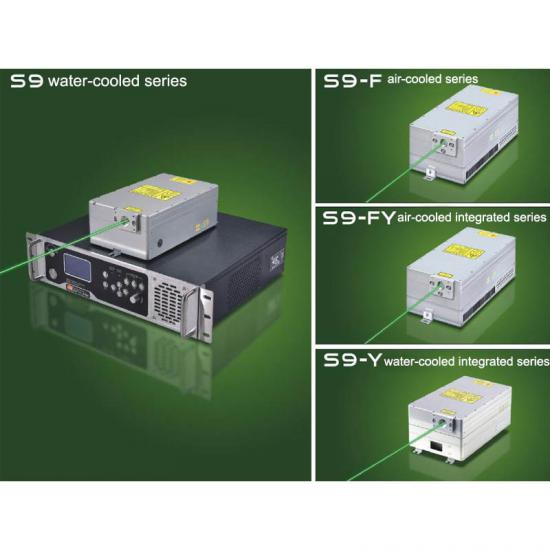Blog más reciente
Corte por láser Smart Cleave: un claro ganador para la fabricación de vidrio de precisión
Mar 22 , 2022Smart Cleave laser Cutting: A Clear Winner for Precision Glass Manufacturing
Glass is quite literally all around us, and has been for well over 5,000 years. So, it’s easy to overlook the fact that it’s a unique material, with a very useful combination of physical properties. The most obvious of these, and one of the most valuable, is that it’s transparent.
But, glass is also mechanically strong and relatively scratch resistant. Plus, it doesn’t react with most chemicals – even many strong acids. And, neither liquids nor gases can pass through it. Glass is even biocompatible, which means that sterilized glass can be implanted safely into the human body.
For these reasons, and more, the use of glass has expanded far beyond the architectural and automobile windows we’re all familiar with into increasingly sophisticated products. It’s already widely used in medical devices, life sciences instrumentation, semiconductor tools, and consumer electronics. In the latter, it’s used for display screens in phones, laptops, tablets, and televisions.
The old ways can’t cut it
In many of these high technology applications, there is an ongoing push to make products ever more sophisticated, but also physically smaller and lighter. In terms of the use of glass, this usually translates into a need for thinner pieces, often with curved edges or cutouts. An example of this might be a cellphone display screen that has a cutout for the Home Button.
But, this demand creates a challenge. That’s because traditional glass cutting methods — like good, old-fashioned mechanical cutting with a carbide tool, or waterjet cutting — can’t easily work with really thin pieces of glass, or make these kinds of features – especially tight curves. At least not within the required cost and production time constraints. Even the usual laser glass cutting methods can’t do it cost-effectively at marketing enabling speeds.

uv laser | green laser | Ultraviolet lasers | uv dpss laser | nanosecond laser | UV laser source | Solid State Lasers
Also, these older glass cutting methods produce very small cracks and residual stress in the glass. This makes the glass very much more vulnerable to breakage during subsequent handling and use. Because, oddly, it turns out that when glass breaks, the crack almost always starts at the outer edge, even if the force is applied to it in the center.
Most glass cutting processes also usually create small chips and debris, and a cut edge that isn’t perfectly necessarily perpendicular to the glass surface. Various additional steps, like grinding or polishing the cut surface, may be required because of all this.
For the manufacturer, any additional processing steps required after cutting represent increased production time and cost. Plus, they may have negative environmental impacts if they generate debris that’s hard to dispose of, or require lots of water for cleaning.
SmartCleave speeds precision laser glass cutting
A new cutting method called “filamentation” was developed specifically to meet the growing need for precision, stress-free, debris-free, freeform cutting of thin glass. Filamentation requires an ultrashort pulse (USP) laser because only these can generate the very high peak power this technique relies on.
En la filamentación, el láser USP se enfoca en el vidrio para crear una línea de huecos microscópicos (o filamentos) que pueden tener varios milímetros de profundidad. Para hacer un corte continuo, el rayo láser se mueve en relación con el vidrio en el patrón deseado y se producen una serie de filamentos muy próximos entre sí. Según el grosor y el tipo de vidrio, la pieza se separará directamente a lo largo del corte o se puede separar calentándola.
La filamentación permite el corte a alta velocidad de curvas e inserciones (sin conicidad) en vidrio de 0,05 mm a 10 mm de espesor. E incluso funciona con vidrio reforzado químicamente, que se usa ampliamente en pantallas táctiles.
Coherent ha desarrollado su propia forma de corte por filamentación, llamada SmartCleave. Este método utiliza específicamente las características únicas de nuestros láseres USP de la serie HyperRapid. Una de ellas es la llamada operación de "modo de ráfaga", en la que el láser emite una serie de pulsos de fuego rápido. Esto termina produciendo un perfil de calentamiento más suave que una serie de pulsos con la misma energía total, pero entregados durante un período de tiempo más largo.
Los beneficios de SmartCleave son un aumento en la velocidad de corte de hasta un factor de dos. También produce agujeros que son más suaves y rectos que otros métodos de corte por filamentación. Además, SmartCleave deja un borde cortado libre de microfisuras, astillas y residuos. Todo esto mejora el rendimiento de la producción y reduce los costos al eliminar los pasos posteriores al procesamiento. Y produce una pieza de vidrio acabada mecánicamente más fuerte.